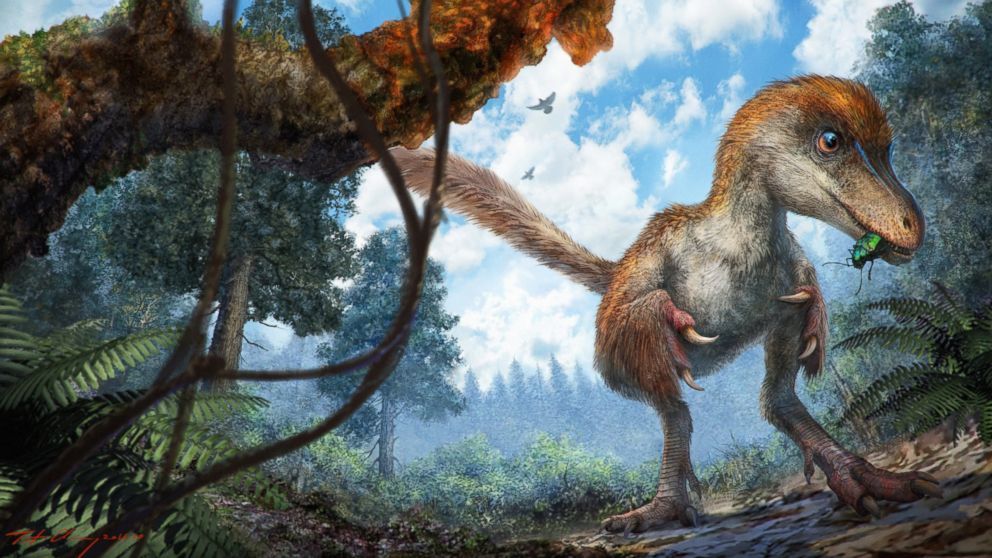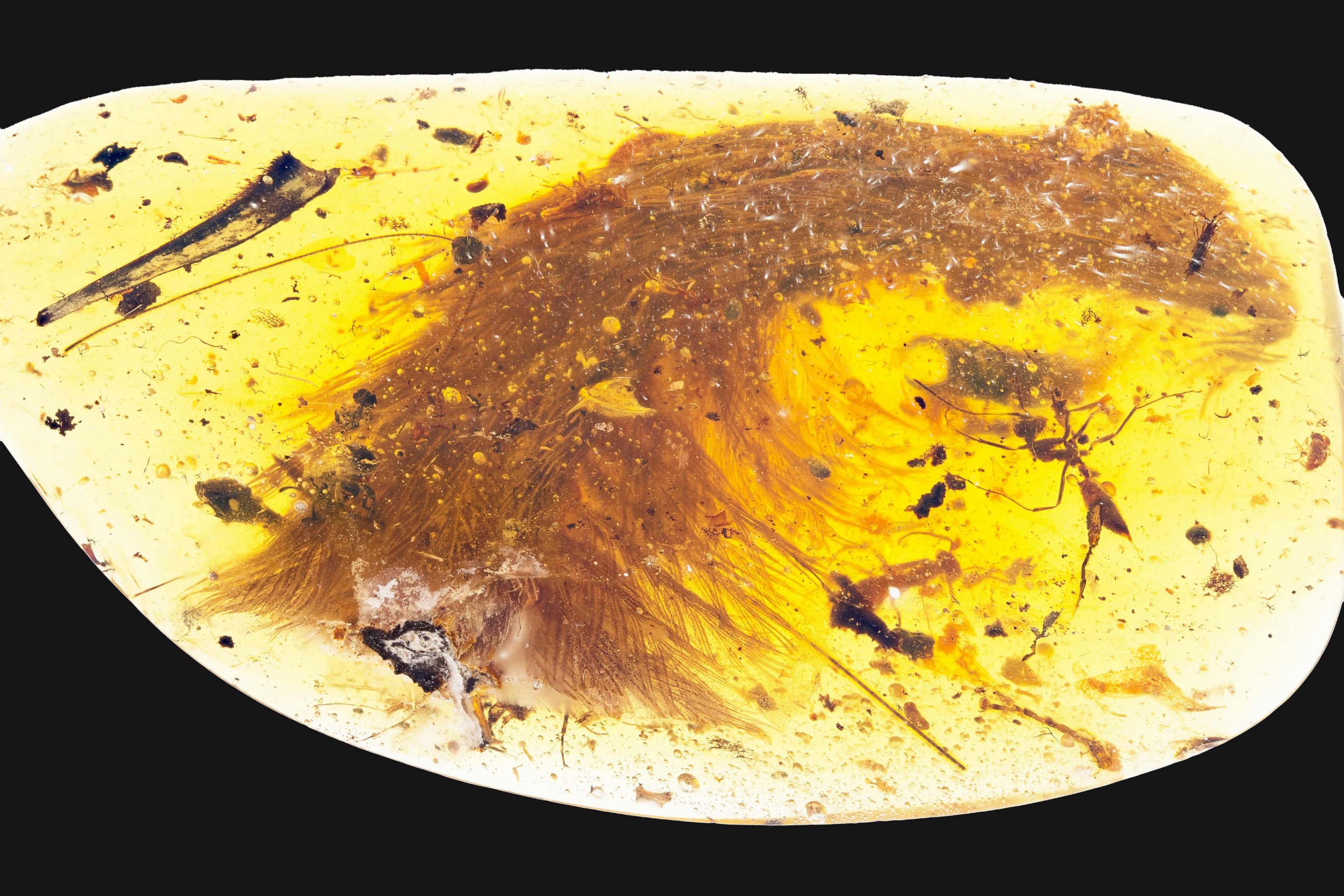Discovery of Dinosaur Tail Encased in Amber Sheds Light on Evolution of Feathers
A scientist chanced upon the specimen at a market in Myanmar.
— -- A dinosaur tail preserved in amber has been discovered for the first time ever, researchers announced on Thursday in a paper published in the scientific journal Cell Biology.
The feather-covered tail is from a dinosaur that lived on Earth about 99 million years ago, according to a news release from Cell Press, which publishes Cell Biology.

Lida Xing, the paper's lead author and lecturer at the China University of Geosciences in Beijing, chanced upon the "remarkable specimen" while perusing an amber market in Myitkyina, Myanmar, in 2015, Cell Press said.
The dinosaur tail originally could have just ended up "a curiosity or piece of jewelry," Cell Press said, "but Xing recognized its potential scientific importance and suggested that the Dexu Institute of Palaeontology buy the specimen."
The finding has helped provide significant insight into dinosaurs' feather structure and evolution, which can't be determined from fossil evidence, according to Cell Press.

"Amber pieces preserve tiny snapshots of ancient ecosystems, but they record microscopic details, three-dimensional arrangements and labile tissues that are difficult to study in other settings," said Ryan McKellar, co-author of the paper and curator of invertebrate paleontology at the Royal Saskatchewan Museum in Canada.
Researchers have been using CT scanning and microscopic observations to get a closer look at the feathers, Cell Press said. The scientific journal publisher noted that hemoglobin, a protein in red blood cells that carries oxygen, was found in the amber.
Researchers said they are now "eager to see how additional finds from this region will reshape our understanding of plumage and soft tissues in dinosaurs and other vertebrates," Cell Press added.

